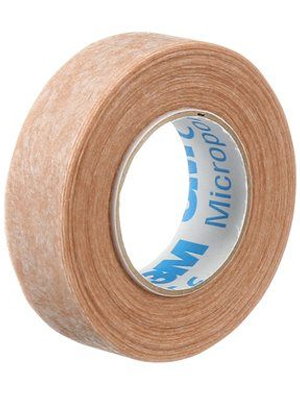
In general, I have my patients use a micropore tape for the first one to six months after surgery. THE TREATENT: Pressure, Silicone, and vitamin E.Ĭonstant pressure on the scar (either with tape or silicone gel sheeting) as well as massage in the first 6 months of healing can dramatically reduce the thickness of a scar. too much movement in the area or rubbing on the scar by tight clothing) can stimulate the scar to “over heal” and become hypertrophic.
#Does micropore tape help scars skin
In general, the amount of collagen you have in your scar is at its greatest in 6 weeks to 3 months after the skin injury (or surgery), so this is the time to really make sure you do whatever you can to keep the scar flat. In fact if you have blonde hair and blue eyes, you have a much better chance of a scar with no thickness to it at all. Hypertrophic scarring usually occurs in people who are genetically prone to it (African American, Asian, Italian, American Indian)-basically almost all darker skin types. Hypertrophic or keloid scars do not always occur consistently-a person prone to them can develop them with one surgery and not the next, or they can occur on certain parts of the body (the breast bone and scalp are especially prone) and not others. Just because you think your scar could look better, doesn’t mean it is a keloid. I often find that many people mistake a hypertrophic scars for keloids, or even normal scars for keloids. A keloid is an extreme type of hypertrophic scar that grows like a tumor…beyond the borders of the original break in the skin. This type raised or scarring is called hypertrophic scarring. Some individuals tend to lay down too much collagen, creating a thick red scar. A scar is basically a collection of collagen, blood vessels and epithelium (the outer layer of skin) trying to close a defect in the skin layer of the body.

Believe it or not, these are actually people that are prone to over healing. There are certain people that are genetically prone to making “bad” scars. For the purposes of an organized discussion, scars can be divided up into groups that include: It is very important to understand that there are different types of unsightly scars that require different kinds of prevention and treatment.

There are different problems a scar can have, and each problem is treated differently. A traumatic scar needs to be cleaned thoroughly and sometimes even cut out and sutured to get optimal healing. Over activity immediately after a surgery is also bad for scars as it can pull on the scar and cause it to widen. Any surgery where a flap of skin is developed (for example a tummy tuck or a breast lift) needs extra special care to achieve good healing and minimal scars. You should quit all nicotine products at least 6 weeks before your surgery, or else all bets are off.Ĭertain surgeries also have a higher chance of healing problems than others. Smoking has nicotine in it, which constricts blood vessels, and also carbon monoxide, which depletes your blood of the nourishment provided by oxygen. If you smoke, and you heal well, you just got lucky. Smoking is one of the worst possible things you can do before and after a surgical procedure. Also certain medical conditions, such as diabetes, obesity, and scleroderma can cause scars to heal worse. For example, people with dark skin, hair and eyes are prone to developing worse scars than people with lighter skin. If there is a lot of discharging and needs to be changed, keep it with your fingers so that the wound does not open and carefully replace it with a new one.There are many things that can make a scar worse that can sometimes be avoided, and sometimes can not. Disinfection is easy to be on the Steri-Strip directly, because the permeability is good. If you apply directly to the injured wound instead of suturing, it is not necessary to remove the Steri-Strips until the wound is healed. If the adhesive strength weakens and when it seems like peeling off, then replace it. Usually more than 3 days are well maintained. Usually it is suggestive to change every 3-5 days. If the Steri-Strips attached after removing the stitches, the adhesive strength decreases as time goes by. The period for replacing the Steri-Strip is not fixed. It is best to disinfect it with betadine when you sterilize it on Steri-Strip. Therefore, Steri-Strips can be disinfected without removing them. As mentioned earlier, one of the advantages of Steri-Strip is that it is semi-permeable. You can apply betadine or povidone disinfectant on the Steri-Strip. When you are dressing the next day, remove the gauze and leave the Steri-Strip.


 0 kommentar(er)
0 kommentar(er)
